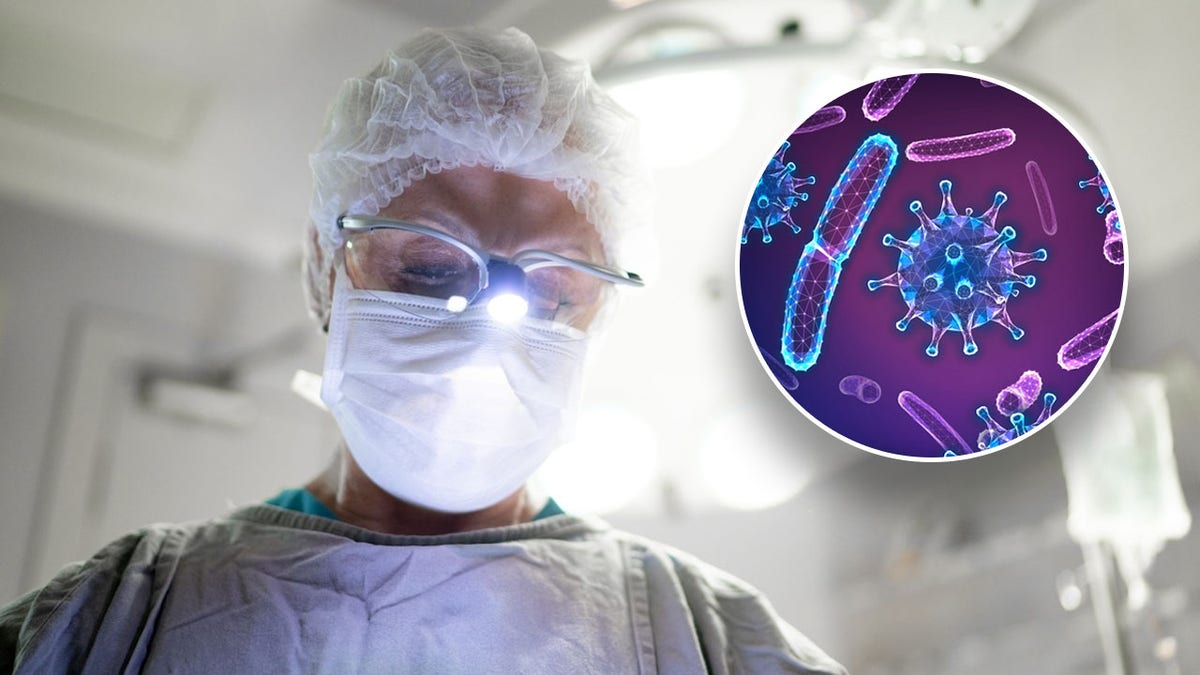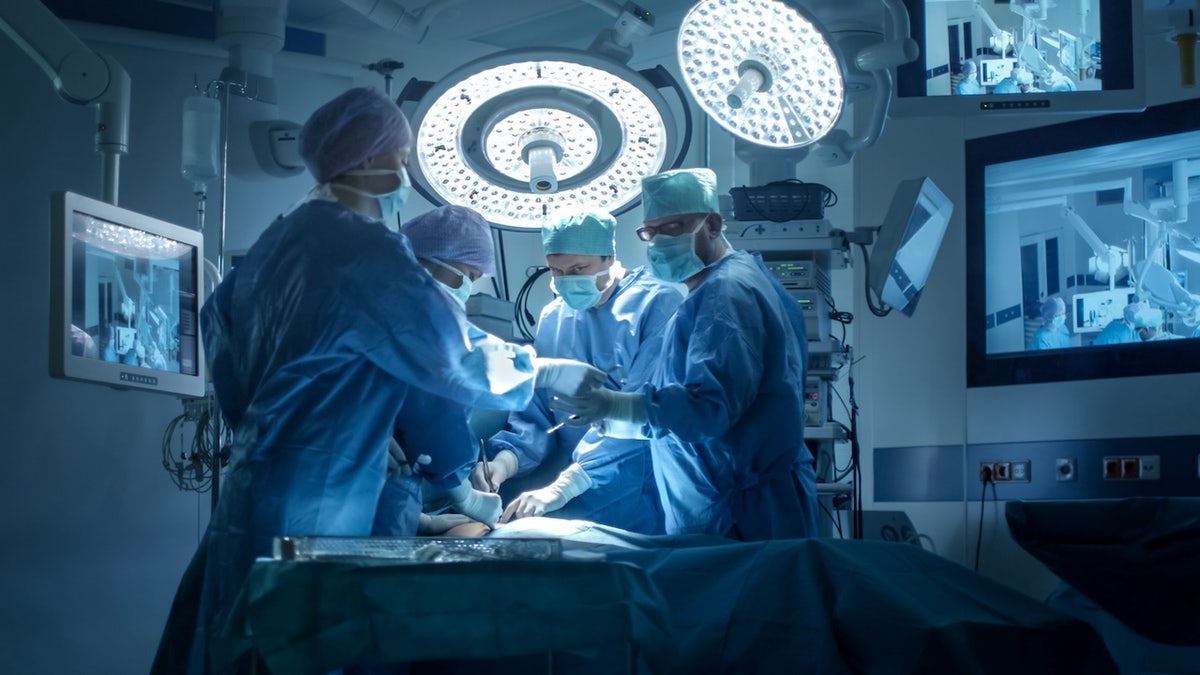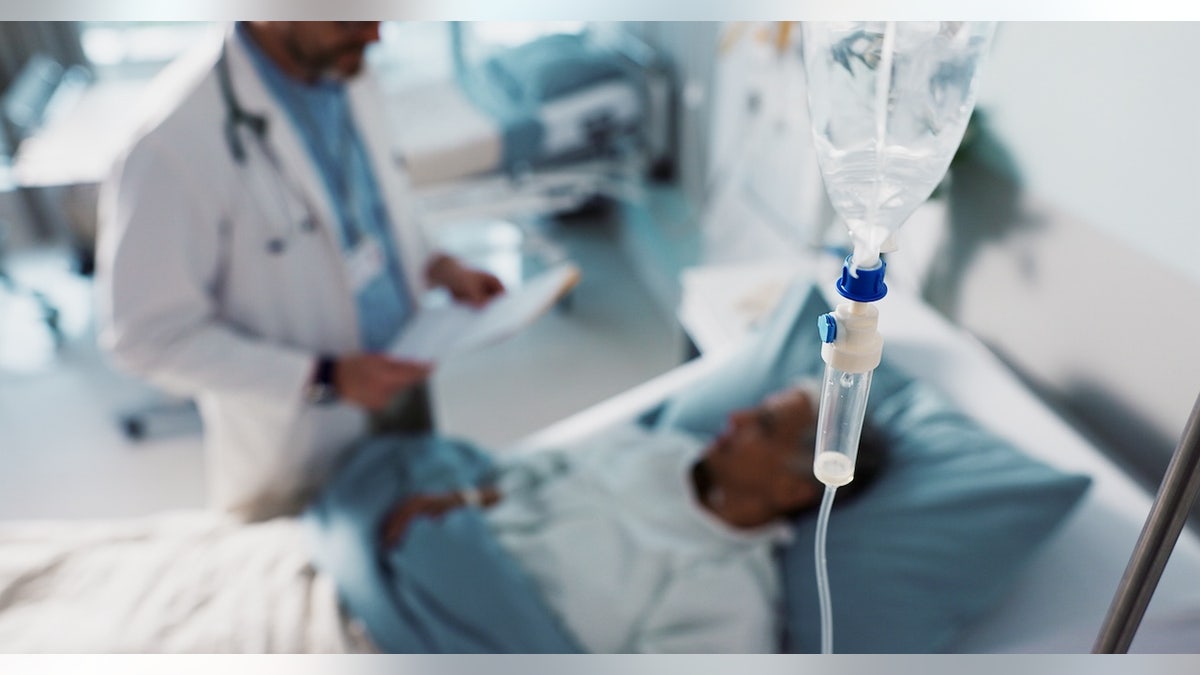Up to 5% of people who have surgery may develop an infection, which can delay healing and lead to dangerous complications, studies show.
Additionally, chronic wounds affect approximately 6.5 million patients in the United States.
Some bacteria are not visible to the naked eye, which means they can escape doctors' attention when cleaning a wound.
A new medical technology using fluorescent light has proven effective in detecting missed bacteria, according to new research from the University of Southern California, Los Angeles (USC).
PINEAPPLE-BASED BURN TREATMENT REDUCES NEED FOR SKIN GRAFTS: “A NEW PATH TO WOUND CARE”
In an analysis of 26 medical studies, a handheld device using autofluorescence (AF) imaging successfully “illuminated” bacteria in nine out of 10 wounds, with each type of bacteria taking on a different color, according to a USC news release.
The results were recently published in the medical journal Advances in Wound Care.

A new medical technology using fluorescent light has proven effective in detecting missed bacteria. (iStock)
Real-time detection
In traditional cases, surgeons take tissue samples from wounds and send them to a lab for testing to determine what types of bacteria are present, the researchers noted.
It may take several days to get results, during which time an infection can set in.
BLOOD BANKS SEEKING GROUP O BLOOD DUE TO EMERGENCY SHORTAGE: 'WE STILL NEED IT'
“Bacteria can cause wound infections when they get into the cut or wound and colonize it,” Dr. Raj Dasgupta, a pulmonary and critical care specialist at Huntington Health in Los Angeles, told Fox News Digital.
“If a person does not receive treatment for a wound infection, the infection can spread to other parts of the body, which can lead to serious complications.” (Dasgupta was not involved in the new study.)

In an analysis of 26 medical studies, a handheld device using autofluorescence imaging successfully “illuminated” bacteria in nine out of 10 wounds. (iStock)
According to the study's researchers, the lighting technology allows clinicians to see bacteria in real time, leading to more targeted and effective wound care.
“Fluorescence imaging, particularly with devices like MolecuLight, offers a significant advancement in the ability to detect bacterial burdens in chronic wounds, such as diabetic foot ulcers,” Dr. David G. Armstrong, the study’s lead author, professor of neurological surgery and director of the USC Limb Preservation Program, told Fox News Digital.
“If a person does not receive treatment for a wound infection, the infection can spread to other parts of the body, which can lead to serious complications.”
It could also help prevent the need for antibiotics, as bacteria can be killed before infection occurs.
“The study also explores the potential of portable fluorescence imaging devices, which could further revolutionize surgical debridement by providing continuous visualization during the procedure,” Armstrong added.

According to the study's researchers, the lighting technology allows clinicians to see bacteria in real time, leading to more targeted and effective wound care. (iStock)
One of the most surprising findings of the study was that large amounts of bacteria did not always cause symptoms, but still slowed the healing process, the researchers said.
This highlighted the need for “more sophisticated diagnostic tools” in wound management.
OZEMPIC PATIENTS MAY FACE DANGEROUS RISKS DURING SURGERY, DOCTORS WARN
“The whole idea here is to be able to prevent an infection before you have to give someone antibiotics,” Armstrong said. “That's the best way to promote superbugs.”
Based on this study, Armstrong recommends that clinicians consider incorporating fluorescence imaging into their standard wound care protocols, particularly for chronic wounds such as diabetic foot ulcers.
“The main idea here is that we might be able to anticipate an infection before we need to give someone antibiotics.”
“This technology not only improves the accuracy of debridement, but also facilitates earlier intervention, potentially reducing the risk of complications such as infections and amputations,” he told Fox News Digital.
CLICK HERE TO GET THE FOX NEWS APP
“We also recommend that healthcare providers stay informed about advances in portable imaging technologies, which may soon offer even greater flexibility and precision in wound care.”
Fluorescence can't replace lab tests, surgeon says
Dr. Patrick Davis, a facial plastic surgeon at Davis Facial Plastics in Beverly Hills, California, stressed the importance of preventing bacterial infections, especially for revision rhinoplasties, which he said carry a higher risk of this type of complication.

“This technology not only improves the accuracy of debridement, but also facilitates early intervention, potentially reducing the risk of complications such as infections and amputations,” said one researcher. (iStock)
“There has been modest research done on using fluorescence to illuminate a particular wound bed,” Davis, who was not involved in the new study, told Fox News Digital.
“The idea is that certain bacteria will emit a certain wavelength of light. Staph infections, for example, would emit a different color than another type of bacteria.”
CLICK HERE TO SUBSCRIBE TO OUR HEALTH NEWSLETTER
This can be helpful in confirming what type of antibiotic to use for treatment, Davis noted, while also telling the surgeon the “bacterial load,” which indicates the level of bacteria in the wound.
The use of this technology still requires further research, according to the surgeon.

This technology could help avoid the need for antibiotics because bacteria can be killed before infection occurs. (iStock)
“Right now, this technology would not replace simply swabbing the area and then doing a lab test to determine exactly what type of bacteria is present and what antibiotic to use,” he said.
“However, this technology can give a real-time indication of the family of bacteria present, even if it is not necessarily as precise – this task is still reserved for a laboratory.”
Dasgupta agreed that the device could be a “safe, effective, accurate and easy-to-use tool” to improve wound assessment, but he noted that fluorescent light imaging has some limitations when used to detect bacterial infections.
DOCTORS ARE INCREASINGLY USING SMART REALITIES IN THE OPERATING ROOM: “A POTENTIAL TO REVOLUTIONIZE SURGICAL PROCEDURES”
“The evaluation is limited to bacteria that produce fluorescent molecules on the surface and subsurface of the skin,” Dasgupta told Fox News Digital.
“The detection capability also depends on the number of bacteria present in the wound,” he continued. “In addition, the depth of the wound cannot be measured with this type of assessment.”
Limitations of the study
The main limitation of this study is that it relied on “controlled lighting conditions” for the fluorescence imaging devices to work properly, Armstrong noted.
For more health articles, visit www.foxnews.com/health
“This could be a challenge in some clinical settings, particularly in real-time surgical environments,” he said.
Chronic wounds affect approximately 6.5 million patients in the United States
Further research is also needed to confirm the effectiveness of wearable devices compared to existing wearable devices.
The study is funded in part by the National Institutes of Health, the National Institute of Diabetes and Digestive and Kidney Diseases, and the National Science Foundation's Center to Stream Healthcare in Place.
